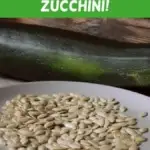
Learning how to successfully save zucchini seeds can only mean one thing: even more zucchini next year!
But wait, there is more. Especially if you are willing to search a bit more under those gigantic leaves.
With a glut of zucchini to harvest, you will also need more jars for canning pickles and zucchini relish.
You’ll need more ideas on how to preserve zucchini for months to come.
And you will need to come up with a plan on how to grow your squashes and zucchini, so that your zucchini crop does not cross-pollinate with like-flowered companions.
If all goes according to plan, you will also need to find a way to get rid of your excessively abundant crop! That, in fact, may be the hardest task of all.
Luckily, saving zucchini seeds is incredibly easy.
Choosing a zucchini to save seeds from
For starters, it is useful to know that the zucchini (Cucurbita pepo) we all know and love to eat, is an immature fruit.
We pick it when it is tender and juicy, when the seeds are just starting to form. That is when it is at its best. Not only for eating raw, but for chocolate zucchini cake too.
In order to harvest your own zucchini seeds, you will have to let your chosen zucchini ripen on the vine. Let it keep growing and growing as long and wide as it can get, then remember to bring it indoors before your first frost.
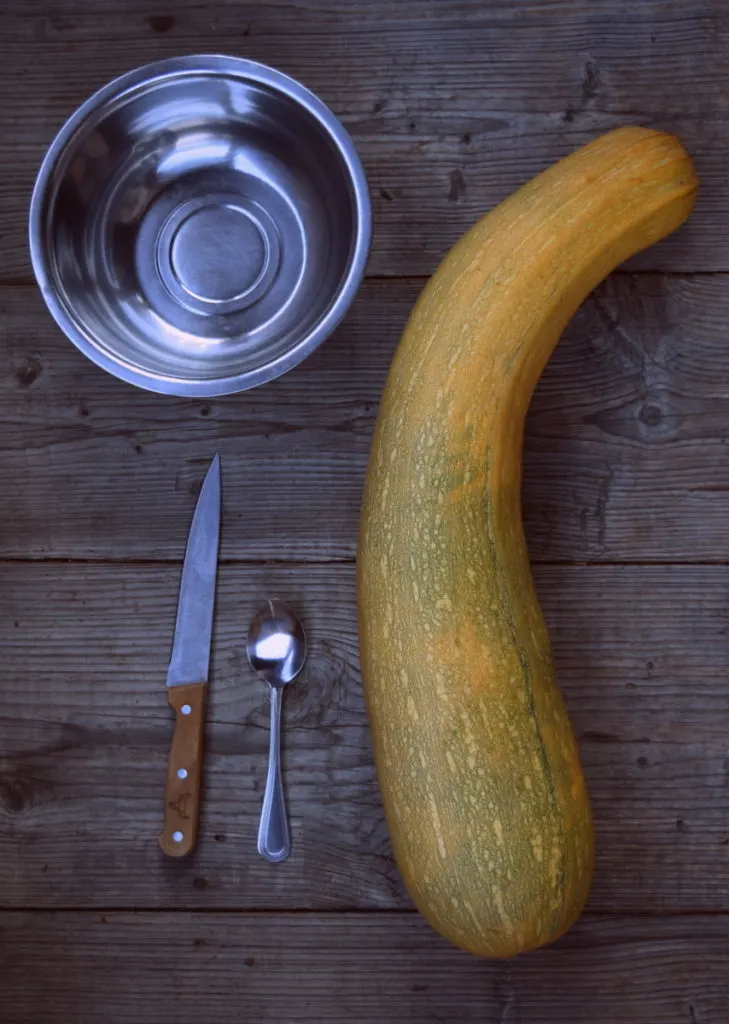
At this time, the skin of the zucchini will have started turning yellow as it becomes super hard. The flesh, at this point, is inedible. Yet, the seeds are fully mature inside.
How many seeds are there in one zucchini?
Lots. Hundreds. More than you would ever want to plant, or even have space for in your garden.
If you reserve just one zucchini for seed saving, you will have plenty to sow and even more to share. However, if you decide to rather save a smaller amount from several different mother plants, your garden may enjoy that much greater genetic diversity within the variety.
This particular zucchini we saved for seed had 250 viable seeds in just half of the fruit. That’s approximately 500 seeds in one zucchini! Considering they have a pretty good germination rate, and you only need to plant 3-4 per nest, I know for certain that we have plenty of seeds to barter or give away.
Cutting open the hardened zucchini
With a sturdy, sharp knife and a steady hand, you will want to cut your zucchini in half. The easiest way to get started is to cut off of the skinny end (with the stem) so that you have a flat surface for putting pressure in. Then take your knife and slice from the bottom (blossom end) all the way through.
As with most squashes, the majority of seeds will be in the lower/larger portion of the zucchini.
If a kitchen knife isn’t strong enough to do the job, go ahead and use a small axe, or other harvesting tool to break your way in. While the skin is hardened and tough, the insides are still quite soft.
Scooping out the zucchini seeds
Now comes the fun part, getting a little slimy.
Scooping out the zucchini seeds is easy enough with a spoon, or with your hands. You can even get some help from smaller fingers, as they too learn how to save essential garden seeds.
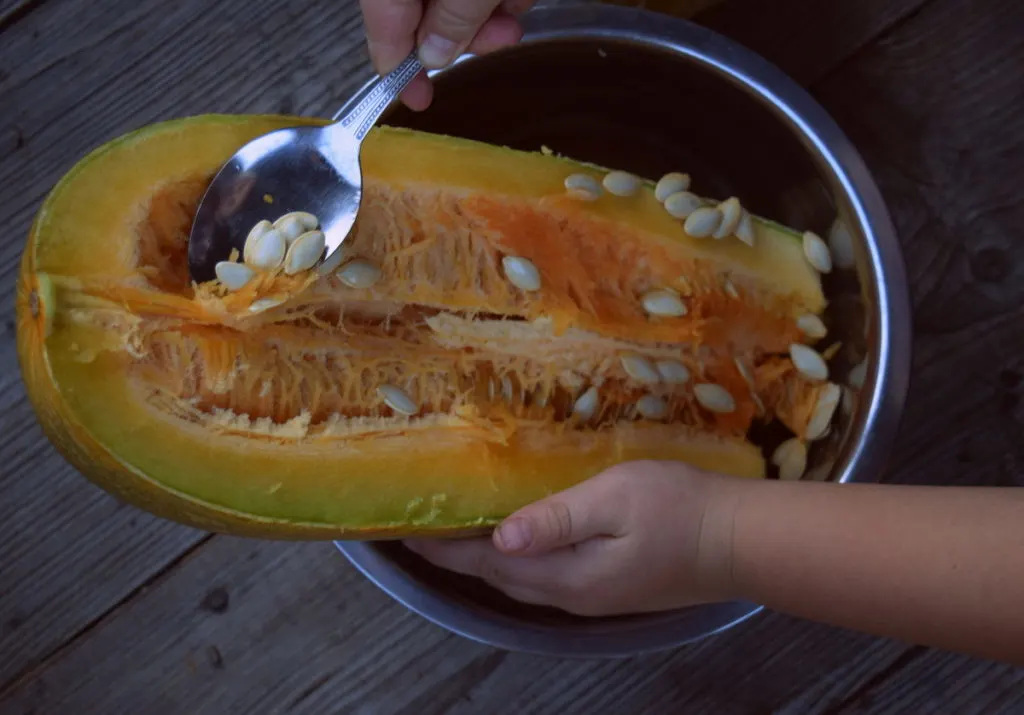
Your job is to get as many seeds into a bowl as possible. Some slippery ones will run away, that is okay.
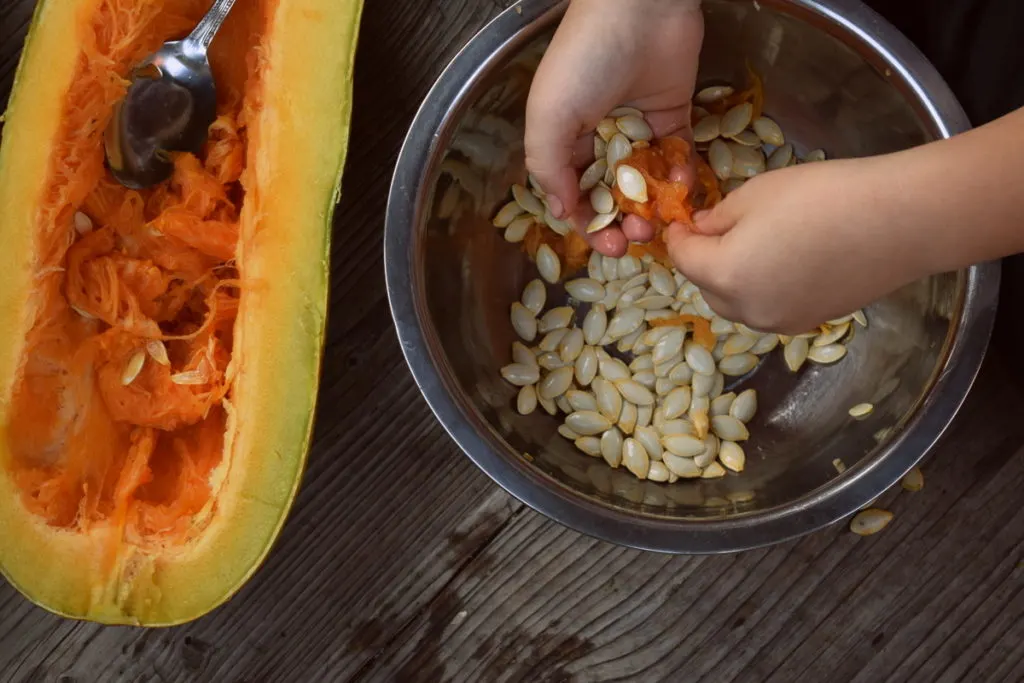
At the same time, begin to pull off the excess wet flesh. Toss that and the de-seeded zucchini boat onto your compost pile. Be sure to cut it up into smaller pieces to decompose faster.
Cleaning the zucchini seeds
There are two lines of thought when it comes to cleaning your zucchini seeds.
The first is that they should be fermented in a bowl of water for 1-2 days, then cleaned with running water and dried.
The other way, our tried and tested-true way of saving zucchini seeds, is far simpler.
Rinse the seeds in water, giving them a good swirl.
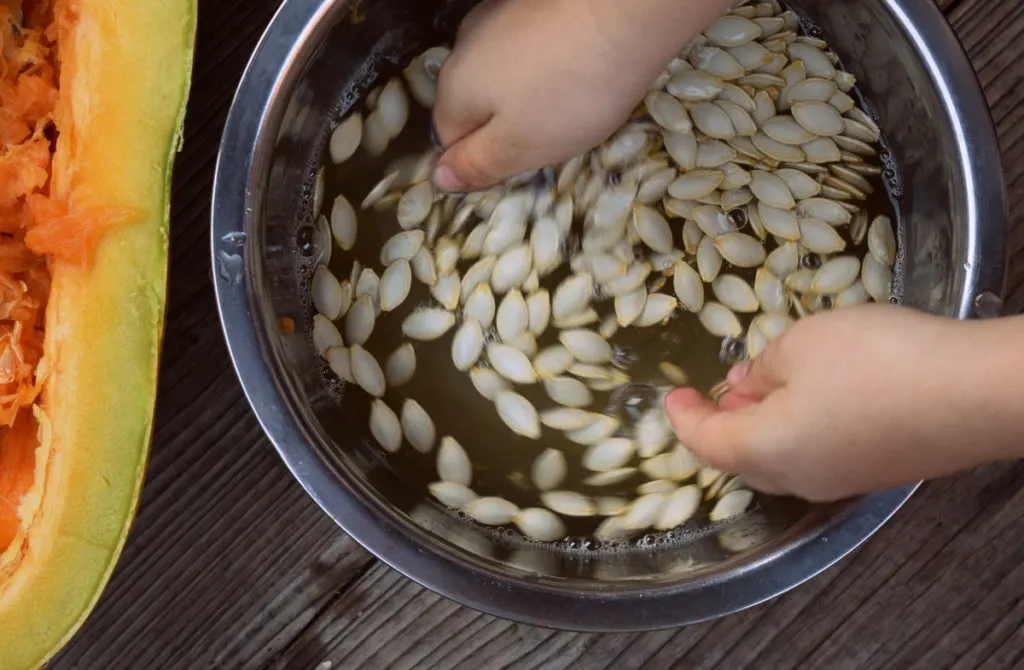
Let them sit for 5-10 minutes, then strain with a fine mesh strainer.
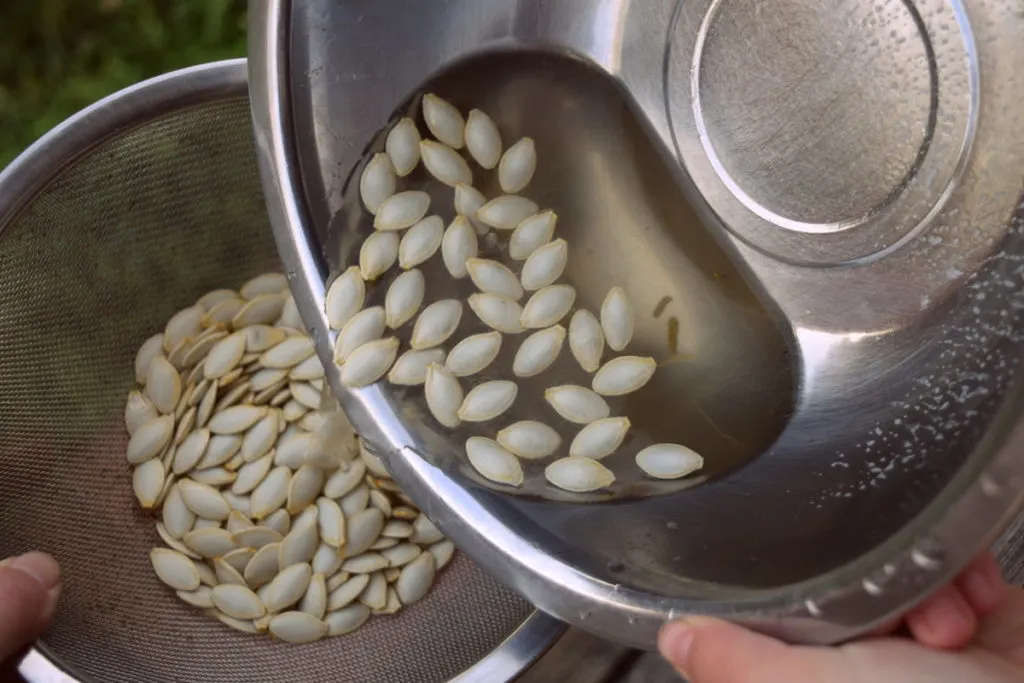
Take a large ceramic plate and spread the seeds out to dry.
Alternatively, you could also use a drying screen.
Fat and plump seeds are the ones worth saving. Flat and/or deformed ones can go straight to the compost with the flesh.
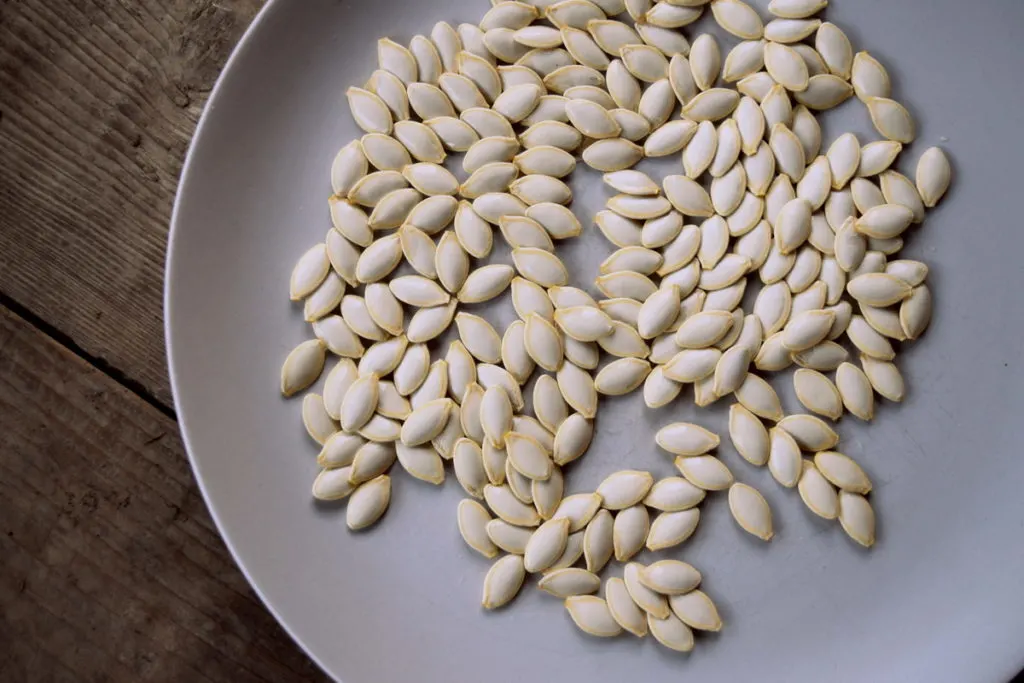
Inside, in a warm room the seeds will slowly begin to dry. When they start to stick together, just separate them by hand and let them air dry longer, remembering to stir them frequently.
There is absolutely no need to toss them in the dehydrator, or the oven. This may actually destroy the viability of the seeds.
After 3-4 days, your zucchini seeds should be dry enough to store.
How dry do they need to be?
Saving seeds is both an art and a science. Yet, with some practice and experience, it is nothing you need a degree for. You only need to look back a couple hundred years (before seed catalogs) to see that humans have long learned how to selectively save seeds to garden year to year.
Whereas tomato seeds need a little more care – and fermentation time – saving zucchini seeds is more akin to preparing pumpkin seeds.
To find out whether your seeds are dry enough for storage, let your fingers do a little observation test. Have the skins started to become papery and began to flake their thin, transparent tissue off? Are they rattly between your fingers?
If you are still unsure, open one up to see the true seed inside. It should both appear, and feel, dry.
Dry your zucchini seeds for a minimum of two days, leave them two more for good measure.
Then you can store them in a paper envelope, or in a glass jar.
Just be sure to label your seeds with the variety name and the date!

Get the famous Rural Sprout newsletter delivered to your inbox.
Including Sunday musings from our editor, Tracey, as well as “What’s Up Wednesday” our roundup of what’s in season and new article updates and alerts.


